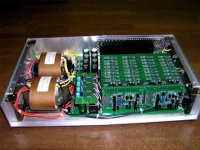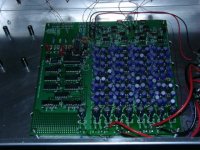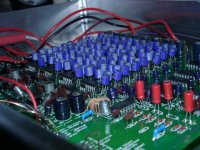Have a look at our Japanese mates, they are obsessed, no wonder they have the highest suicide rate. Look at the links pages 1 to 26, below is just one of their home made dacs. Wonder how some of them sound, hell of a lot of work gone into some of them,
http://translate.google.com/transla...&hl=en&ie=UTF-8&oe=UTF-8&prev=/language_tools
Cheers George
http://translate.google.com/transla...&hl=en&ie=UTF-8&oe=UTF-8&prev=/language_tools
Cheers George
Attachments
I would wager that the kind of person that just goes for it and produces the kind of totally over the top designs that appear in Japanese DIY magazines is far less likely to commit suicide than one that umms and arrghs over illusionary differences between bits of wire or one that constantly needs ones choices validated by others. BTW, you find much higher suicide rates in parts of Europe than you do in Japan.
Obsessed.... 😕
An externally hosted image should be here but it was not working when we last tested it.
curva said:Obsessed.... 😕
That's tame, the first post has 16 PCM63K's on those daughter boards.
Here's some more
Cheers George
Attachments
Those Japanese links contain a lot of info (Google translation) - not bad...
Suicide rates:
http://en.wikipedia.org/wiki/List_of_Countries_with_the_highest_suicide_rates
Many countries/regions do not provide the stats, though.
Boky
Suicide rates:
http://en.wikipedia.org/wiki/List_of_Countries_with_the_highest_suicide_rates
Many countries/regions do not provide the stats, though.
Boky
No wonder if you consider the country was completely destroyed by the Tartars in the 13th century, occupied by the Turcs for 150 years in the 16th-17th century, was torn in 3 parts for 300 years, lost more than 2/3 of its territory and later occupied by the Russians for 40 years in the 20th century, and lost all wars through its history . Since the political system changed to democracy in 1989, the suicidal rate is decreasing, though it is still high. It's a wonder why audiophiles over here are among the most obsessed...AR2 said:The highest suicide rates are in Hungary.
man these guys are serious DIYERs, dont know how these DACS sound.
BTW:
suicide rate here is increasing exponentially....
smiles
BTW:
suicide rate here is increasing exponentially....
smiles
The pdf file manuals available on the site contain circuit diagrams.
Thanks for the original link. Very interesting.
Thanks for the original link. Very interesting.
I see they use a lot of green caps(Nichicon Muse I believe) and even use some os-cons on the analog side of things. Not to speak about some who use very very long leads for opamp bypass caps, just for the sake of using what appears to be mica caps.
I also wonder what the point of paralleling a lot of caps is, when you keep their leads quite long and when you place them in positions that appear to be after the regs.

I also wonder what the point of paralleling a lot of caps is, when you keep their leads quite long and when you place them in positions that appear to be after the regs.

" ... I also wonder what the point of paralleling a lot of caps is [?] ..."
My guess = lots of little caps of higher voltage = very large cap with same # of Farads. There may also be the advantage that smaller caps respond better than bigger ones (but this could be resolved by simply using plastic snubbing caps parallel to the bigger electrolytics).
Obsessed or obsessive ... maybe, but I'll bet it sure sounds great ... 😎
My guess = lots of little caps of higher voltage = very large cap with same # of Farads. There may also be the advantage that smaller caps respond better than bigger ones (but this could be resolved by simply using plastic snubbing caps parallel to the bigger electrolytics).
Obsessed or obsessive ... maybe, but I'll bet it sure sounds great ... 😎
georgehifi said:Another angle
Is that how they grow capacitors? I have always wondered where they come from. 🙂
Yes! ... you start with little 5 volt 1 uF caps, plant 'em in rows using a little silver solder on each === they grow slowly into larger 50 volt 10 uF in about 3 months, bigger if you water 'em ... 😉
oshifis said:If it's a polar bear living at the South Pole, it has to go to the North, then West, etc.
But it started heading south, so there is no need to relocate it to the Antarctic. 😉
curva said:I also wonder what the point of paralleling a lot of caps is, when you keep their leads quite long and when you place them in positions that appear to be after the regs.
Lots of small caps paralleled lead to low ESL and ESR. McCormack class-A amplifiers used this topology to good effect when they placed a cap with a few thousand uF right at every output device: there was no extra inductance from the wires leading to large filter caps.
- Status
- Not open for further replies.
- Home
- Source & Line
- Digital Source
- Are these guys are obsessed, or what


